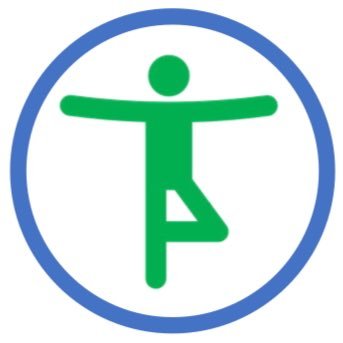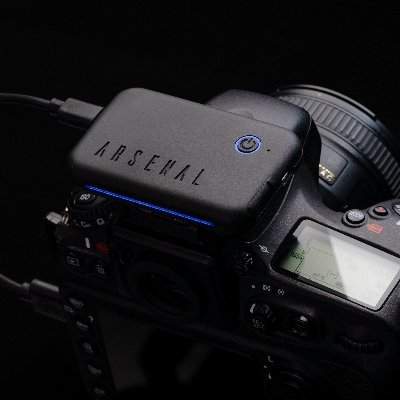
The STAB:LE Program
@stable_program
Followers
2,032
Following
891
Media
113
Statuses
589
Systematically developing the essential movement skills that older adults need at home, outside, and in the community
Joined February 2022
Don't wanna be here?
Send us removal request.
Explore trending content on Musk Viewer
#RutoMustGo
• 1602044 Tweets
Carvajal
• 407081 Tweets
Real Madrid
• 275640 Tweets
Amber Rose
• 142371 Tweets
Jack Black
• 142194 Tweets
Gibraltar
• 124433 Tweets
Gareth
• 105496 Tweets
Hala Madrid
• 84953 Tweets
プライムデー
• 84561 Tweets
#EveryWONWOO_Day
• 83262 Tweets
#ViVi国宝級イケメンランキング
• 80917 Tweets
Prime Day
• 77412 Tweets
#西園寺さんは家事をしない
• 70986 Tweets
Walker
• 57869 Tweets
#lovefighters
• 48132 Tweets
CLOVER
• 47282 Tweets
#南くんが恋人
• 46954 Tweets
アイカツ
• 43476 Tweets
Tenacious D
• 41224 Tweets
土井先生
• 31005 Tweets
ランクイン
• 27106 Tweets
Potter
• 26003 Tweets
アルカディア
• 24823 Tweets
Virgen del Carmen
• 24490 Tweets
Klopp
• 16422 Tweets
ピーナッツくん
• 14728 Tweets
#兎田ぺこら新衣装
• 14140 Tweets
KP.3
• 11998 Tweets
レイエス
• 10951 Tweets
激辛チップス
• 10645 Tweets
Last Seen Profiles
Sideways falls and landings have the biggest association with fractures...
...yet the ability to cross-and-step to recover from a sideways loss of balance is a skill that’s absent in most balance & mobility rehab programs
8 of 30
#STEPtember
2
26
124
If someone is upper limb dependent for balance and unable to demonstrate integrated ankle-hip-step balance recovery strategies?
👉 The use of skill progressions enables a safe & systematic method to develop autonomy in that specific movement skill
18 of 30
#STEPtember
1
15
93
👉 The inability to step quickly and correctly makes the difference between recovering balance and falling 👈
(this systematic review & meta-analysis of 61 studies shows stepping performance is significantly worse in fallers compared to non-fallers)
2 of 30
#STEPtember
0
19
83
People don't fall over because they lose their balance
(normal healthy adults lose their balance several times per day BUT they automatically step to recover)
People fall over because they can't *recover* from a loss of balance
1 of 30
#STEPtember
0
29
86
Regaining normal balance recovery strategies isn't complicated BUT needs planning:
👉 Practice scaled versions of each movement skill that needs to be improved & then progressively increase the challenge until the client reaches their movement goal
26 of 30
#STEPtember
2
10
68
During a sideways loss of balance, bodyweight is transferred onto the lead leg which prevents it from stepping
👉 The ability to cross-&-step to recover from a sideways loss of balance is one of the most important mobility skills an older adult needs
7 of 30
#STEPtember
3
3
72
Exercises to "improve balance" while holding onto a chair do just that:
They improve balance that involves upper limb support
(but discourage use and development of normal ankle-hip-step balance recovery strategies AND reinforce reliance on upper limbs)
20 of 30
#STEPtember
0
12
56
The ability to cross-&-step to recover from a sideways fall isn't just about balance
👉 Many UNAIDED older adults lack the leg dexterity to step across without their feet clipping
(even if the balance challenge is removed by having both hands supported)
10 of 30
#STEPtember
3
9
55
The foundation of balance involves an integration of ankle, hip, and step responses...
👉 Even though Berg Balance Scale is the most popular assessment used, it doesn't assess:
⛔️ Step response in any direction
⛔️ The ability to cross-and-step
11 of 30
#STEPtember
3
10
50
When it comes to preventing falls:
Balance Recovery Strategies > Balance Maintenance Strategies
👉Teach clients to step early & fast👈
15/30
#STEPtember
0
11
45
Normal balance involves an integration of ankle, hip, and step strategies
(once its impossible for ankle/hip strategies to maintain Centre Of Mass within Base of Support, we need to establish a new BOS)
Not only is stepping normal, it should be encouraged
3 of 30
#STEPtember
1
8
47
When a person steps out of position during a balance exercise?
❌ They haven't "lost their balance"
✅ They've used their own balance recovery strategies
(the thing we're actually trying to develop)
👉 Stepping should be encouraged and celebrated
23 of 30
#STEPtember
1
2
42
The movement skills required to step to recover from a loss of balance are distinctly different depending on the direction…
…the risk of fracture (and type of injury) is also direction-specific
6 of 30
#STEPtember
0
4
43
The ability to step to recover from a loss of balance is direction-specific:
The muscles used, timing, & sequence are different for each direction
(all directions must be assessed and programs structured to target specific deficits)
5 of 30
#STEPtember
0
5
40
To develop normal ankle-hip-step balance recovery strategies...
...you need to practice exercises that incorporate ankle-hip-step responses
(static holds with feet together, heel-toe, or standing on one leg don't achieve this)
16 of 30
#STEPtember
1
6
37
The app that I most highly recommend for any clinician involved in balance and mobility rehab is
@clock_yourself
:
The ability to step to recover from a loss of balance is essential, and this app provides an easy, fun, and scalable method to achieve this
2
3
34
@CorKinetic
@mark__mcg
Not going to lie, you had me there (if I checked your user name I would've seen it was a joke, but I was too busy allowing my BP get to 250/180) 😜
2
0
30
Foundational balance skills include integrated ankle-hip-step responses for EACH direction
👉 A tool that individually assesses EACH direction of movement (like the BESTest) should be used
(at very least each direction should be assessed in isolation)
12 of 30
#STEPtember
0
3
33
Everyday indoor mobility requires the ability to step autonomously:
🔵 Forwards
🔵 Sideways
🔵 Backwards
🔵 Turning clockwise/anti-clockwise
🔵 Crossing feet
(normal walking practices fwd stepping disproportionate to need/risk in other directions)
28 of 30
#STEPtember
0
3
33
I ❤️ this for strength training
For balance & mobility rehab?
The 5 basic mobility groups needed to train every movement skill. Simple & prioritised:
1 Balance recovery strategies
2 Indoor mobility skills
3 ADL balance & mobility skills
4 Outdoor mobility
5 Community mobility
Something I picked up from
@Rob_NBF
I now use this all the time with my patients…
The 6 basic movements needed to train every major muscle group in the body. So simple & efficient:
1 Squat
2 Hinge
3 Vertical push
4 Vertical pull
5 Horizontal push
6 Horizontal pull
10
38
327
0
4
29
While the BESTest assesses stepping in each direction, its important to note that subjects score 'normal' for lateral balance recovery if:
🟠 Crossover OR lateral
But remember, normal is the ability for:
🟢 Crossover AND lateral
13 of 30
#STEPtember
0
2
31
👉 Prioritising the ability to step to recover from a loss of balance improves performance in other balance rehab exercises
❌ If someone is unable to step to recover, they'll (understandably) self-limit the balance-challenge they place upon themselves
22 of 30
#STEPtember
0
3
26
The ability to step quickly, accurately & in all directions is a foundational movement that's an essential balance strategy
Foam balance pads are often used statically (which can inhibit normal balance recovery skills)
...so check out the new balance mat by
@pt_neuro
👌
1
5
26
The ability to step to recover from a loss of balance is critical even for those who use their walking frame "at all times"
This client population develops abnormal reliance on their hands for balance
(so are severely compromised during standing ADLs)
19 of 30
#STEPtember
0
3
24
The inability to step across your feet without them touching:
❌ Creates an inability to RECOVER from a sideways loss of balance, AND
❌ It's the CAUSE of many falls
👉 Crossing feet is NORMAL and NEEDED for falls prevention AND direction changes
9 of 30
#STEPtember
0
0
25
@CorKinetic
Teaching someone how to get up off the floor after a fall isn't about activating specific muscles...
...its a skill that can reduce complications associated with a long-lie, improve client confidence, reduce burden on an over-strained health system, and potentially save a life
1
0
22
An inability to step causes patients to overly rely on their ankle-strategy in an attempt to recover from medium or large balance disturbances
When this fails, they start reaching & grabbing
(unfortunately there's not always something there to grab)
4 of 30
#STEPtember
1
0
22
If someone has an over-reliance on their ankle strategy and an inability to step, exercises like this:
❌ Reinforce over-reliance on ankle strategy
❌ Incentivise delay in step-response
👉 This exercise achieves the opposite of its intent
24 of 30
#STEPtember
0
1
21
Developing an integrated ankle-hip-step response to a loss of balance is the foundation of functional mobility:
Although it makes for a fun day at work, it makes little sense to prioritise exercises wobbling on boards, tapping balloons, or random surfaces
21 of 30
#STEPtember
1
2
21
A well-rounded balance rehabilitation program includes training that is:
✅ Anticipatory
✅ Reactive, and
✅ Perturbation-based
Check out this article for principles, mechanisms, how to implement perturbation-based balance training into clinical practice
Delighted to share our published article:
"Perturbation-based balance training: Principles, mechanisms and implementation in clinical practice"
w Tanvi Bhatt, Marissa Gerards, Kiros Karamanidis, Mark Rogers, Stephen Lord &
@OkuboYoshiro
@FrontSportsAL
🧵
1
36
82
0
7
21
If someone has a delayed step coupled with over-reliance on ankle & grab responses:
🚩 Exercises like this reinforce over-reliance on ankle strategy AND grab-response
(and eliminate the need to step)
👉 This exercise achieves the opposite of its intent
25 of 30
#STEPtember
0
3
20
@CorKinetic
This client has a structured resistance program
(and needed to develop pre-req strength to achieve her movement goal)
She has exercises designed to improve ROM
Her primary goal is to never be stuck on the floor again, dependant on others
1
1
18
Error based learning:
Unless a client's allowed to practice stepping to recover from a minor loss of balance
(but in a way that's safe)
they won't have the opportunity to develop the skills to recover if they really lose their balance & really need it
17 of 30
#STEPtember
1
0
17
If clients lack a step response in a specific direction, a well-rounded falls prevention program should inc education on specific tasks that place them at risk
eg inability to cross-&-step
⚠️ Sudden twists & turns
⚠️ Uneven surfaces
⚠️ Unexpected forces
14 of 30
#STEPtember
0
2
18
How are the glutes loaded during different exercises?
Standing hip abduction...
...doesn't even make it past the qualifying heats, let alone run the main race
0
1
16
@SynapseRut
Peggy lacked strength & balance. She was weak & frail, is a stroke survivor with a past # pelvis.
She couldn't get up even if pulling on furniture.
This is a result of consistency, dedication, and systematically working through a structured series of skill progressions
0
0
15
Standing hip abduction or extension exercises are of little value in a falls prevention strength and balance program…
…this great article also questions their utility in post THR rehabilitation:
0
6
14
“It is essential that interventions should address the different aspects of falls efficacy in terms of balance confidence, balance recovery confidence, safe landing confidence and post-fall recovery”
Great read, top work by
@ShawnSohPT
et al👌
👉 …
2
2
13
@l_giangregorio
I personally prefer RIR for assessing exercise intensity rather than RPE… some clients I work with are the other way around
Neither are an exact science and are an approximation… which means a correlation chart can still be useful
0
3
12
The ability to autonomously step in all directions (including cross-and-step) is a fundamental component of normal balance recovery strategies
Older fallers have poorer stepping ability than non-fallers. Impaired volitional and reactive stepping are significant fall risk factors in older adults.
Have you been using any step tests to predict falls in your older patients?
#geriPT
#FallPrevention
0
4
16
0
2
12
@Martin_Nekkolai
Balance rehab doesn’t need to be over-complicated with random exercises like eyes closed on foam mats
Its simple:
Practice scaled versions of each movement skill that needs to be improved and then progressively increase the challenge until the client reaches their movement goal
2
0
12
Both reactive and volitional step training interventions reduce falls amongst older adults by approximately 50%…
…yet most therapists are fixated on static balance training & developing ankle response
Can’t wait for
@WaynelsChan
’s presentation 👌
I will be presenting the preliminary results of the effects of step training on people with
#dementia
at
#ADI2022
.
Looking forward to meeting everyone this week.
@AlzDisInt
@ADIConference
0
2
11
0
0
11













































































